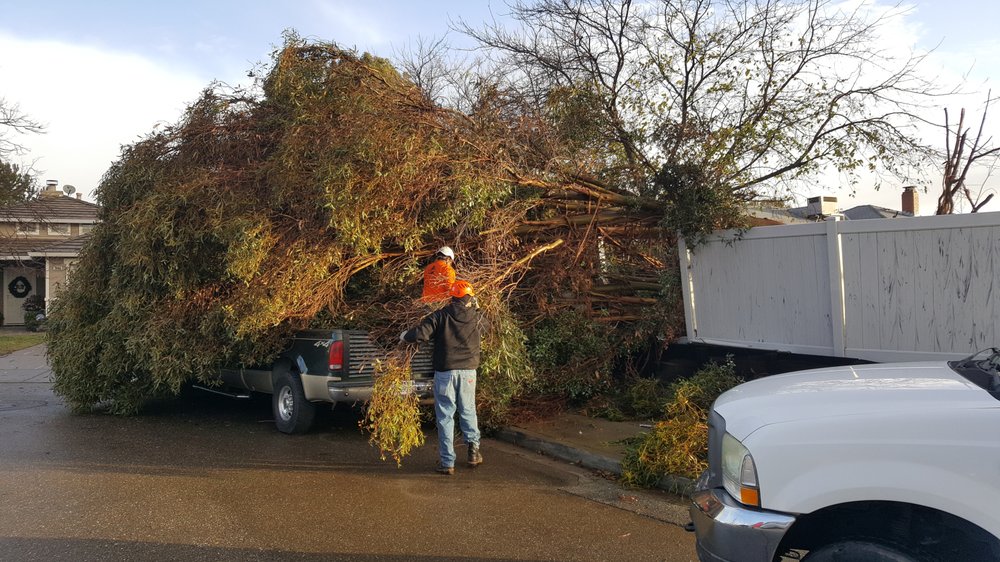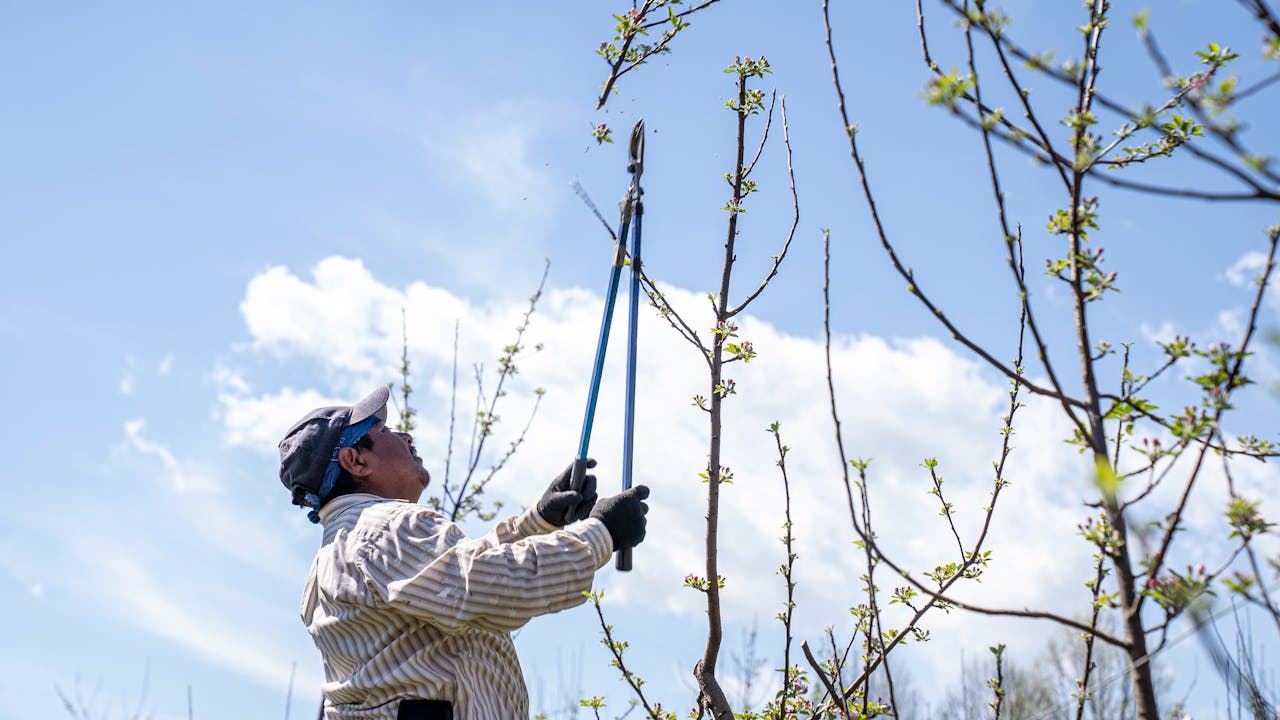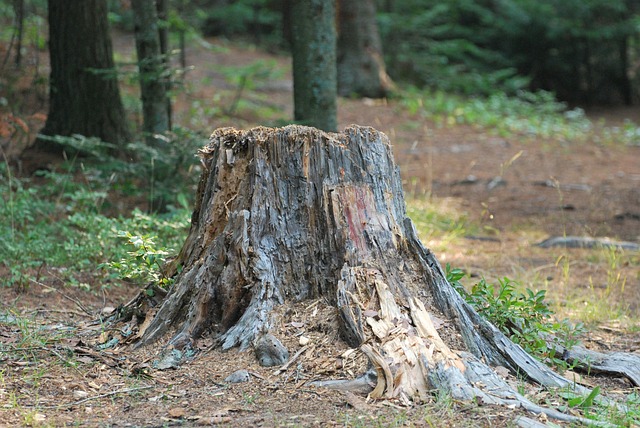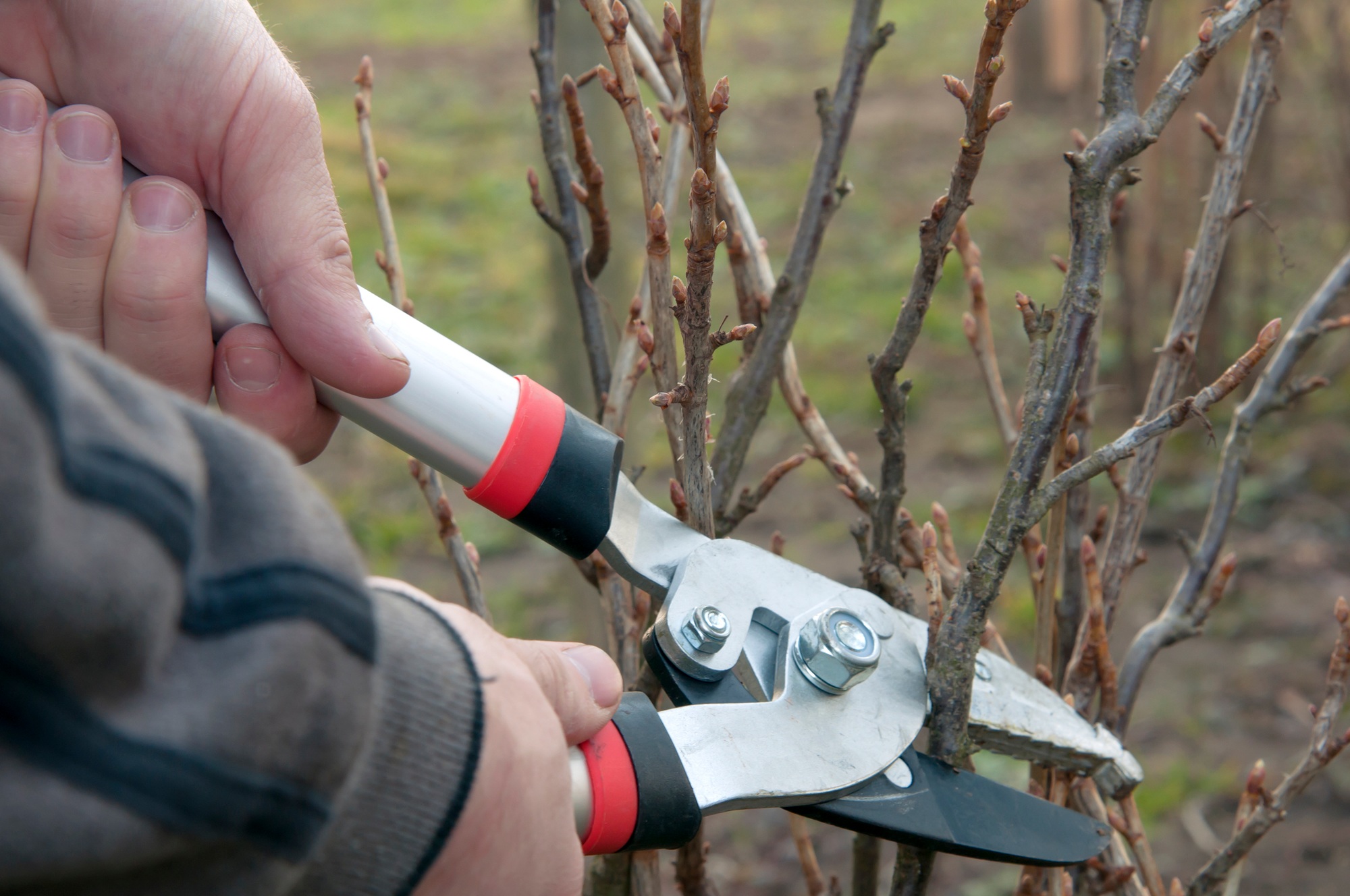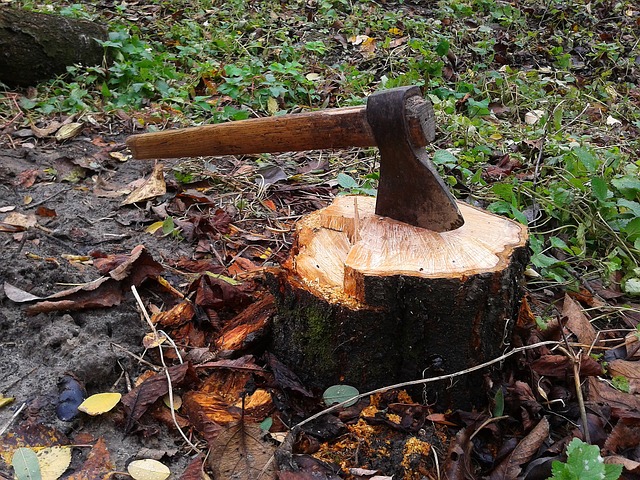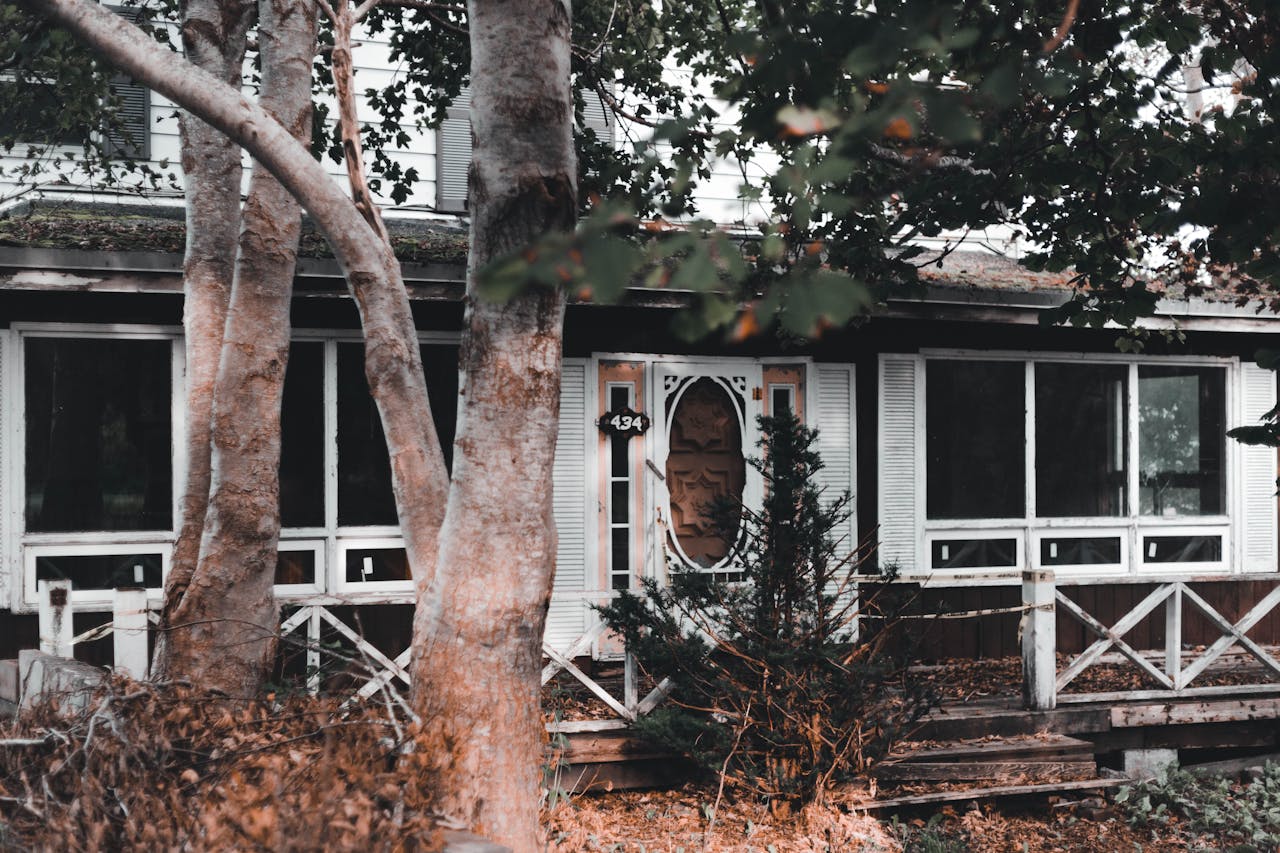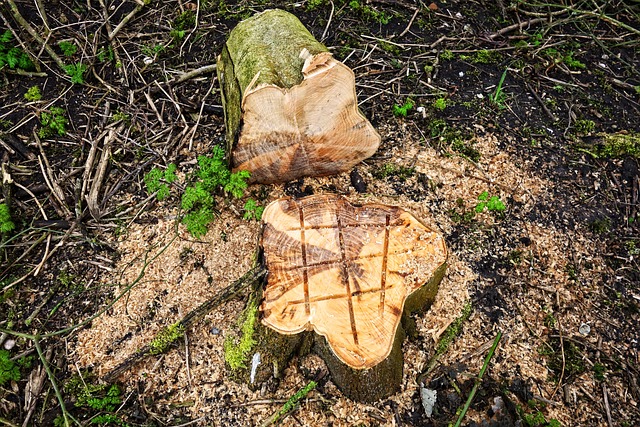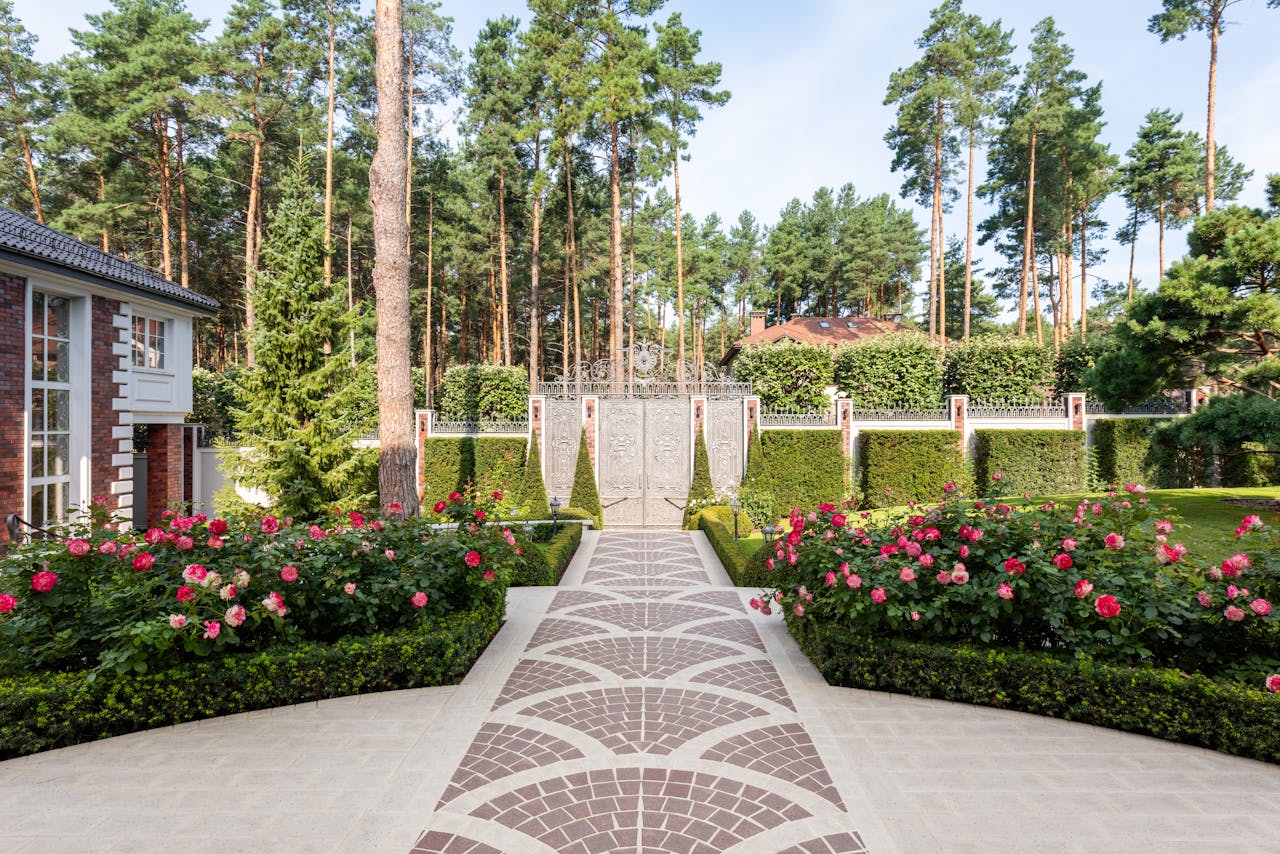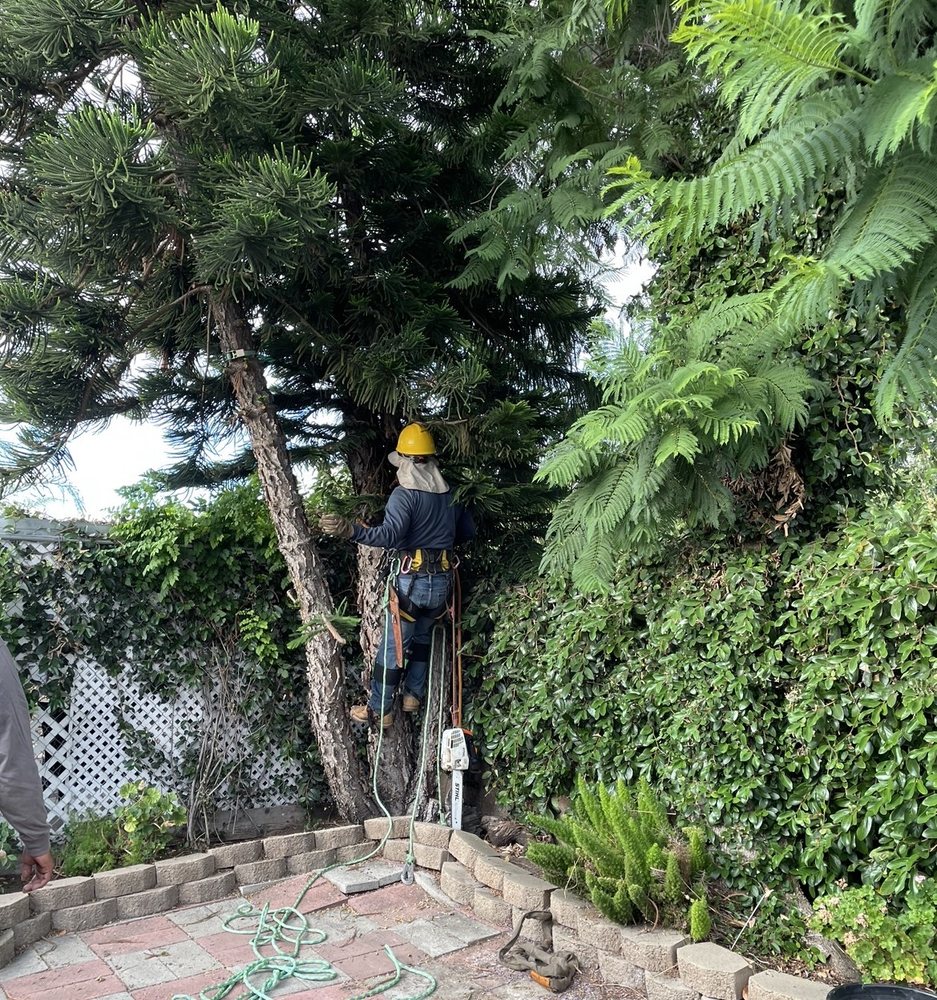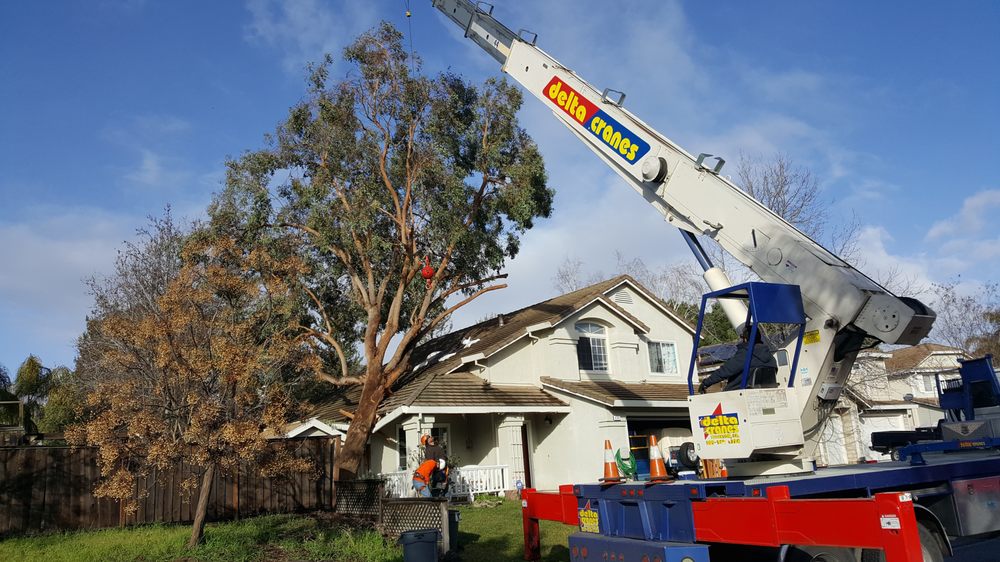Key Takeaways
- Arborists are tree care professionals, trained and certified in the best practices to maintain trees in ways that are safe, effective, and environmentally friendly.
- Certified arborists offer comprehensive tree care, including pruning, disease diagnosis, pest management, and safe tree removal, tailored to individual tree needs.
- Most importantly, hiring an arborist is your best bet for identifying tree health issues in advance, preventing long-term damage and pricey repairs.
- With the benefit of new tools and techniques, arborists can diagnose disease accurately and create an efficient treatment plan that serves the tree’s best interests.
- An arborist will perform regular tree inspections to locate any potential risks. This proactive tree care protects against damage to property and injury to people while increasing your property’s value.
- When hiring an arborist, check credentials, certifications, and insurance to make sure they’re a reliable professional.
You might wonder if hiring an arborist is necessary when dealing with tree diseases. The truth is that their expertise can often save a tree and prevent the spread of issues to other plants. Arborists are trained to diagnose diseases, assess tree health, and recommend treatments that work, whether it’s for fungal infections, pests, or nutrient deficiencies.
Some signs, like discolored leaves, unusual growth, or bark damage, might seem minor but could point to deeper problems that require professional care. While smaller issues can sometimes be managed on your own, certain situations call for professional help to ensure safety and proper care.
Let’s explore when it’s time to reach out to an expert and how they can help.
What Is An Arborist?
An arborist is a qualified professional who is well-versed in trees and their care. Their role is complex, centering around tree health, safety, and longevity. Unlike general tree professionals, arborists undergo extensive training and often attain certifications, such as the ISA Certified Arborist credential, which requires at least three years of experience or a relevant degree.
This degree of in-depth knowledge empowers them to evaluate trees as a whole, correctly diagnose diseases plaguing them, and provide solutions customized to individual needs.
Arborist’s Role In Tree Care
Arborists provide a wide range of services, from regular pruning to diagnosing and treating diseases. Their work begins with detailed assessments to evaluate a tree’s condition and identify potential risks. For example, they might spot signs of fungal infections or structural weaknesses that could lead to falling limbs.
Arborists play a critical role in managing hazards, such as safely removing trees that pose a danger to properties or people. By focusing on soil health, proper planting techniques, and species-specific care, they ensure trees flourish in their environment.
Arborist Specializations Explained
Arboriculture branches into wide-ranging specializations, including tree surgery, pest control, and soil health. These specialists tackle special challenges, such as fighting invasive pests or restoring trees wounded in natural catastrophes.
Beyond hands-on services, arborists educate clients on tree biology, helping them make informed care decisions.
Distinguishing Certified Arborists
Certified arborists follow a code of ethics and best industry practices. Their certifications represent mastery of a body of knowledge and a commitment to continuing education. This is to make sure that their work is up to date with the newest techniques in tree care.
What Services Do Arborists Provide?
Arborists are qualified tree care professionals who help manage trees’ aesthetics, health, and safety. Whether it’s planting a new tree or providing emergency care after a storm, their expertise guarantees custom solutions focused on a variety of needs.
Below is a comparison of their core services:
Service | Purpose | Examples |
Tree Pruning | Improves structure and growth | Crown thinning, deadwood removal |
Planting & Relocation | Ensures healthy establishment | Species selection, root ball handling |
Tree Removal | Safely eliminates hazards | Diseased or dead tree removal |
Routine Maintenance | Prevents issues, enhances health | Mulching, watering, fertilization |
Risk Management | Identifies and mitigates tree hazards | Stability assessments, bracing |
Tree Planting And Relocation
Planting trees requires proper site selection, soil preparation, and species choice. Arborists evaluate soil quality, sunlight, and climate to ensure healthy growth.
For instance, they may recommend drought-tolerant species like red oak for arid regions. Relocation involves safely moving mature trees using techniques like root pruning and bracing to minimize transplant shock.
Routine Tree Maintenance Tasks
Arborists do vital work, such as strategic pruning to remove weak limbs, mulching earth to help retain moisture, and watering in prolonged dry seasons.
Seasonal tree care, such as winter protection and spring fertilization, mitigates long-term problems like pest infestation.
Expert Tree Pruning Methods
Arborists often use techniques such as crown raising for clearance or thinning to increase airflow. When you prune, timing is key.
Pruning while trees are dormant minimizes stress. Bad cuts can end up weakening trees, so it’s especially important to use the right tools, such as hand saws or pole pruners.
Safe Tree Removal Practices
Removing trees involves steps like risk assessment, branch dismantling, and stump grinding. Arborists use rigging systems and cranes for safety.
DIY removal risks property damage and personal injury, making professional help essential.
Emergency Tree Care Solutions
Arborists are often first responders, utilizing power tools such as chainsaws and aerial lifts to remove storm debris and stabilize dangerous trees.
Removing hazardous trees stops additional damage to property, infrastructure, and the environment.
When Should You Hire An Arborist?
When it comes to keeping your trees healthy and safe, hiring an arborist can sometimes be the difference between life and death. From determining how to cure a disease to safely clearing storm damage, here are some situations in which you need professional assistance.
Monitor for sagging leaves, unusual bark discoloration, or fungus. These symptoms could point to crushing diseases that need an expert’s eye for diagnosis and surgery. For trees that are overgrown or poorly shaped, strong professional pruning leads to better health, growth, and reduced risk of tree failure.
Trees with broken limbs, leaning trunks, or structural instability after severe weather require immediate evaluation. Arborists help preserve trees by planning around roots and advising on protective measures during development.
Identifying Tree Health Issues
Identifying issues as soon as possible is extremely important. Watch for vertical cracks in the trunk, returning branches from a prune job, sudden leaning or a new structure growing from the trunk. These conditions can often be detected with routine, visual inspections, but proper diagnosis most times requires knowledge of tree biology.
While non-professionals can overlook issues that are not immediately apparent, trained certified arborists can draw on their education and years of experience to evaluate conditions accurately.
Proactive Tree Risk Assessment
A professional risk assessment considers factors like the tree’s location, age, and condition. Arborists evaluate all these elements to prevent accidents or property damage. Regular assessments, recommended twice a year, ensure trees remain safe and healthy.
Managing Storm-Damaged Trees
After a big storm, arborists can safely survey tree damage, recommend treatments such as pruning or cabling, and help restore the tree’s health. Addressing damage early improves recovery and prevents further risks.
Support For Construction Projects
When the goal is to protect existing trees, arborists help mitigate/prevent root damage and plan protective barriers while trees are being planted. Their specialty is keeping trees healthy and vibrant, even amidst the most aggressive development.
Diagnosing Tree Diseases: A Pro’s Touch
The health of your trees is more than skin deep. Diagnosing tree diseases accurately requires an in-depth understanding of plant biology, environmental factors, and disease behavior. While discoloration or wilting might seem straightforward, these symptoms can indicate vastly different issues, from fungal infections to pest infestations.
Arborists draw on years of specialized training and experience. Such understanding enables them to differentiate between a lethal condition such as Dutch Elm Disease, a fatal fungal infection, versus Hawthorn Leaf Blight, which creates red leaf spots but is less harmful.
A careful, systematic approach is the foundation of tree disease diagnosis. Arborists make a thorough investigation of whatever they are analyzing. They look at soil conditions, root systems, and weather patterns to determine what may be causing the problem.
In Oregon’s western forests, the problems are particularly severe, where native diseases wipe out nearly nine out of ten trees. Certified arborists with Green Thumb Tree Specialists understand the intricacies of area problems. They foster collaborative, entrepreneurial approaches to designing better solutions to meet those unique opportunities.
They diagnose the extent of root damage and determine the best pruning methods. Their professional expertise empowers them to take the exact right actions, restoring health and encouraging new growth.
A swift, correct diagnosis is just the beginning. Based on those often-difficult-to-detect findings, arborists create treatment plans—everything from chemical interventions to judicious pruning or even removal that won’t jeopardize other trees.
For instance, an arborist from Urban Forest Pro can decide whether chemical treatments are needed while protecting the environment. By addressing problems at the first sign, arborists can stop permanent harm, saving you from expensive restoration or safety risks such as breaking limbs.
Tree Disease Warning Signs
When a tree’s health is in danger, it can reveal both subtle and blatant warning signs. Identifying these three disease warning signs as soon as possible is vital to preserving the current generation of trees and preventing them from further deterioration. Ongoing, sophisticated inspections are key to identifying issues early before they become tragedies.
Here are the main warning signs of tree diseases to look out for and why timely intervention is important.
Unusual Leaf Discoloration
Look at the leaves. Healthy trees will have lush, healthy leaves that are full and green throughout the growing season. Leaves dropping prematurely, discolored leaves (yellowing, browning, or unusual spots), wilting or curling leaves can all indicate nutrient deficiencies, fungal infections, or pest infestations.
For instance, anthracnose, a widespread fungus in the Pacific Northwest, produces ugly, blister-like brown spots and does well in moist environments. Diagnosis is key. Arborists are experts at determining the underlying issue—disease, invading pests, or environmental stress—aiding them in recommending the right treatment plan to return your tree’s leaves to health.
Branch Dieback Indicators
Losing leaves or dead branches on only one side usually indicates branch dieback. Diseases such as fungi that create cankers produce this condition by killing patches of bark, creating sunken areas. Environmental conditions, like drought, can be triggers for its development.
Left untreated, dieback may lead to the structural failure of a tree. Certified arborists diagnose the level of damage, prune infected branches, and apply preventative measures to increase the tree’s ability to withstand disease.
Trunk And Root Issues
Cankers, galls, and other decay in the trunk or roots weaken wood, compromising stability and health. Arborists look for these conditions, usually manifested as areas of softwood, fungal growth, or a lack of root anchoring.
Appropriate root considerations and soil husbandry are key to sustainable health.
Pest Infestation Evidence
Warning signs, such as small holes in the bark, sticky substances, or sawdust-like powder, indicate an infestation. Insect pests may damage trees by sucking tree sap or girdling tree bark.
With early detection, arborists can control infestations with effective treatments that preserve the tree.
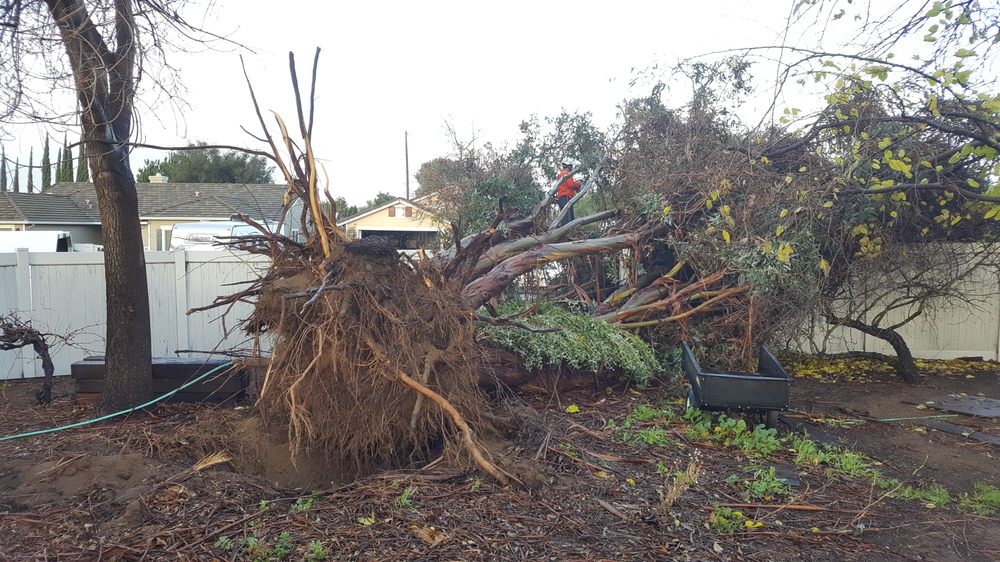
Benefits Of Regular Tree Inspections
Scheduling regular tree inspections with a certified arborist has enormous benefits for tree health and property safety. Regular tree care and inspections empower you to identify potential issues early. Aside from keeping your trees lush and healthy, they help prevent expensive damage to your property.
Cut costs down the line by investing in proactive care to keep your trees healthy and beautiful for years. This will significantly increase the beauty, use, and convenience of your environment.
Early Problem Detection
Frequent inspections are key to detecting early warning signs of tree problems before they escalate into hazardous conditions. Arborists are professionals who are highly trained in detecting disease, pests, and other tree emergencies. They spot issues like dead or dying branches, pest infestations, and structural weaknesses that are easily missed by untrained eyes.
Taking action on these issues before they worsen stops the problem from spreading, helping to mitigate the risk of disease transmission or branch collapse. Winter inspections can identify hazards of tree breakage due to heavy snow or ice loads. That information helps you get ready for the worst of the weather.
By catching any issues early on, you can save your trees while keeping your property and the people in your life safe.
Maintaining Tree Health
Long-term tree health is best achieved through ongoing maintenance. Arborists use their expertise to create customized plans, incorporating practices like proper watering, pruning, and fertilization tailored to each tree’s needs. Thinning out dense foliage increases light penetration and air circulation, which helps to minimize the possibility of fungal disease while encouraging healthy growth.
With regular maintenance in spring, trees can focus their energy on living their best lives. Taking this proactive approach creates the conditions for a healthy and productive growing season ahead.
Preventing Property Damage
Regular tree inspections are essential for pinpointing potential hazards posed by falling branches or uprooted trees. They’re particularly critical for defending homes and other buildings nearby. Arborists can identify these risks and make suggestions to keep damage at bay, whether that’s pruning undesirable limbs or improving root stability.
Preventative maintenance safeguards your land, and it saves money on costly remediation.
Enhancing Property Value
Healthy, well-maintained trees provide a tremendous impact on property value and curb appeal. With professional arborist care, you can help make sure your trees stay beautiful and structurally healthy, contributing dynamic beauty to the aesthetic of your landscape.
Investing in regular tree maintenance protects property aesthetics while providing long-term financial benefits by stopping expensive emergencies before they happen.
Cost Factors For Arborist Services
Understanding the cost factors of arborist services will help you plan your budget accordingly. This wisdom does help to make sure your trees are properly cared for. Whether you’re making an appointment for a regular checkup or dealing with a sudden emergency, many things determine the cost.
Cost Factor | Details |
Service Type | Routine maintenance, emergency services, or specialized treatments |
Tree Size and Complexity | Small, medium, or large trees with varying branch or trunk structures |
Regional Price Variations | Differences based on geographic location, demand, and availability |
Obtaining Accurate Estimates | Ensuring transparency and clarity in service pricing |
Service Type Impacts Cost
The kind of service you choose has the largest impact on the total price. Routine care, like pruning and trimming, costs much less than urgent work, like storm damage clean-up.
Pruning runs $75 to $300 per tree. Emergency services can end up costing an order of magnitude more due to the immediacy and danger presented. Specialized services, like disease treatment or pest control, may necessitate more expertise and resources, raising costs.
You’ll want to know what each service should cost before you get estimates so you don’t get any surprises down the road.
Tree Size And Complexity
Tree size and structural complexity play a critical role in cost determination. Large trees or those with multiple trunks pose added challenges, such as requiring extra equipment or time.
For instance, removing a small tree may cost $150 to $450, while removing larger trees can exceed $1,000. Arborists assess tree size during cost estimations to provide accurate quotes, ensuring they allocate the right resources for the task.
Regional Price Variations
One of the biggest determining factors of pricing is geographic location. Regions with higher demand or where arborists are less available might be more expensive due to less competition.
For instance, rates may be higher in urban areas than in rural areas. Find out what other arborists charge for your local market to find a good price point. Getting several quotes allows you to make sure you’re getting the best service.
Obtaining Accurate Estimates
To get accurate estimates, follow these steps:
- Request a detailed breakdown of services and associated costs.
- Verify transparency in pricing and ask questions if needed.
- Compare multiple written estimates for clarity and fairness.
- Communicate your needs clearly to avoid misunderstandings.
How To Choose The Right Arborist
The right arborist will help make sure your trees get the care and attention they deserve. A professional arborist provides the necessary expertise, safety and reliability for peace of mind. Before hiring one, it’s important to determine a couple of critical things.
Verify Credentials And Certifications
Make sure to verify an arborist’s qualifications to ensure they are ISA certified pros. For example, an ISA Certified Arborist has at least three years of experience and has passed an extensive exam to prove their understanding of proper tree care principles.
This certification is a testament to their dedication to upholding industry standards and providing safe practices. A certified arborist will employ techniques that improve the health of the tree and reduce risks.
Certifications in tree risk management are especially useful when identifying potential hazards in your yard.
Check Insurance Coverage
The right amount of insurance coverage can protect you from liability while tree care services are being performed. Check that the arborist’s liability insurance covers damages to your property and any injuries to workers.
Require proof of insurance and check it out yourself by calling their insurance company directly. This simple additional step ensures your peace of mind.
This is true but is especially important when performing potentially dangerous jobs, such as removing heavy limbs or working on trees with diseases. Hiring uninsured workers might make you liable for damages in mishaps.
Read Client Reviews And Testimonials
Online client reviews can give you a great idea of how an arborist interacts with clients and addresses complaints. Check for reviews on sites such as Angie’s List or Google.
Read through the good and bad reviews to get a feel for customer satisfaction. A good reputation is an indicator of trust, skill, and reliability.
Bad reviews or fake references are warning signs to take seriously.
Ask About Experience And Expertise
An arborist with many years’ experience and a strong track record can address even the most complicated problems with success. Inquire about their understanding of local tree species and growing conditions.
Their specialized knowledge ensures focused and refined care, leading to superior results!
Conclusion
Healthy trees make your property look beautiful and maximize its value. Keeping them in the best health possible usually requires the services of a qualified arborist. Arborists are trained to identify early signs of trouble and address the situation appropriately and expertly. Their knowledge and experience are valuable resources and will save you time and money. You needn’t face the worry of problematic trees by yourself. Whether you’re experiencing tree disease or other issues, regular inspections and timely assistance can make all the difference in maintaining strong, safe trees.
If you see these warning signs, don’t wait to call an arborist. Enlisting the help of a trusted arborist can save you some worry. This is the kind of care your trees deserve and hiring a pro guarantees they’ll receive top-notch treatment. Don’t delay—invest in your trees today and experience the profound impact of professional arborist care.
Frequently Asked Questions
1. What Is An Arborist, And Why Are They Important?
An arborist is a tree care professional specifically trained and equipped to maintain and restore tree health and safety. An arborist can diagnose tree diseases, recommend treatments, and provide ongoing tree care. An arborist can help protect your trees, property, and the environment.
2. Can An Arborist Help With Tree Diseases?
Of course, arborists are trained tree disease experts. They use established scientific techniques to accurately diagnose problems, recommend tree care solutions, and prevent future infrastructural damage.
3. When Should I Call An Arborist For A Sick Tree?
Consult an arborist when your tree shows signs of uncommon leaf color, leaf los,s dead branches, or spores growing on or around the tree. Getting help early on can save the tree and prevent safety hazards from occurring.
4. What Are The Benefits Of Regular Tree Inspections?
Routine inspections identify issues before they become dangerous, enhance the vitality of your trees, and ultimately help you avoid expensive damage. Experienced arborists know how to make your trees thrive and still keep your property safe.
5. How Much Does It Cost To Hire An Arborist?
Prices depend on the type of service provided and the size/extent of the tree. A simple consultation could run you $75–$150, and treatments or removals could be anywhere from $300 to well over $1,000. So, always request a quote in advance.
6. What Are The Warning Signs Of Tree Disease?
Signs include yellowing leaves, wilting, dead branches, and fungal growth at the base. If you notice these signs, it’s time to call your local arborist.
7. How Do I Choose The Right Arborist?
If you do need help, hire an arborist certified by the International Society of Arboriculture (ISA). Look for reviews, request references, and make sure they’re insured and have the appropriate experience.
Protect Your Landscape With JC Tree Service’s Expert Tree Disease Solutions
If tree disease is threatening the health and beauty of your property, JC Tree Service is here to help. Whether you’ve noticed discolored leaves, brittle branches, or unusual growths, our expert team can diagnose and treat a variety of tree diseases. From targeted treatments to full tree removal when necessary, we provide comprehensive tree care solutions in Brentwood, Antioch, and surrounding areas.
Tree disease can spread quickly, weakening your trees and posing risks to your landscape. Early intervention is key to preventing further damage. At JC Tree Service, we tailor our treatments to the specific needs of your trees, helping to restore their health and vitality. Our expert care not only preserves the natural beauty of your property but also prevents potential hazards like falling limbs and decay-related structural issues.
Don’t let tree disease compromise the safety and aesthetics of your outdoor space. Contact JC Tree Service today for professional diagnosis and treatment. We offer a free, no-obligation quote to help you get started. Let us protect and preserve the trees that make your landscape thrive!
Disclaimer
The materials available on this website are for informational and entertainment purposes only and not to provide legal or professional advice. You should contact your attorney or home improvement specialist to obtain advice concerning any particular issue or problem. You should not act or refrain from acting based on any content included in this site without seeking legal or other professional advice. The information presented on this website may not reflect the most current home improvement developments. No action should be taken in reliance on the information on this website. We disclaim all liability concerning actions taken or not taken based on any or all of the contents of this site to the fullest extent permitted by law.

